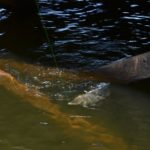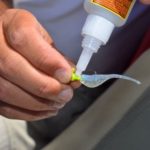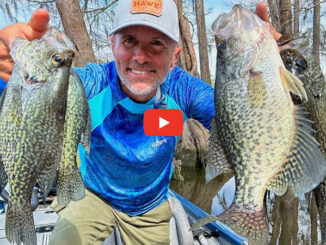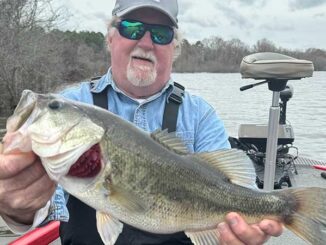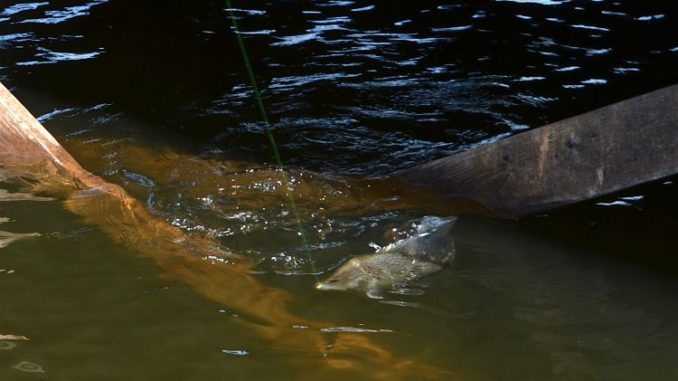
Dusty Anders smells a change in the air.
In spite of being recognized in both 2015 and 2016 by Bassmaster as the best bass lake in the United States, crappie are slowly, but steadily gaining in popularity on largemouth bass in the massive reservoir.
If the part-time guide (318-447-0869) carries a bias, it certainly is in favor of bass. He started bass fishing with his father when he was 7 or 8 years old. By high school, he bass fished every weekend — “every weekend,” he stressed.
Between trips with his dad, he fished with a friend at Nantachie Lake, which he called a “stumpy little lake” between Montgomery and Colfax, La.
“Dad had a Terry bass boat with a 50 (horsepower engine) on it. Back then, it was a nice boat. We were glad to have that.
“When I got on with the Alexandria Fire Department, I decided I wanted a bigger boat and I started tournament fishing. After I got the 16-footer, I started fishing other places: Saline, Larto, Toledo Bend, Sam Rayburn.
“Firemen work ten 24-hour days a month, so I had 20 days a month to fish. The reason I ended up liking Toledo Bend so much is because you can do things there that you can’t do at your local reservoir — ledge-type fishing, deep structure fishing, and offshore-type fishing.
“I bought my first camp on the south side of La Nana in 2005, then bought my current camp on the north side in 2015. I justified it by saying, ‘I’ll spend a lot of time up here after I retire in 2018.”
He fishes other places when he has only single days off or for tournaments. I asked him if he was a Toledo Bend specialist. He beat around the bush, and hemmed and hawed in his north Louisiana twang.
I cut to the chase. “You said that you fish 150 days a year. How many of them do you fish in Toledo Bend?”
“Oh, 120,” he grinned self-consciously.
His credentials as a bass fishermen are impeccable, which makes his crappie observations even more interesting.
Twenty-five years ago, you didn’t hardly see a pontoon boat up here. Now they go out as a fleet in the morning and come back in as a fleet in the evening. I call them the shrimp fleet — go out every morning, come back in every evening.
“Every one of those pontoon boats is out there for white perch (crappie). Bass guiding used to be the thing up here. Now white perch guides stay busier than bass guides.
“People come from far and wide to do it. A lot of people come here from other states with their campers and white perch are all they want.”
In response, Anders has been wading into the crappie guiding pond. Like other guides, he builds “brush piles.” He cuts small trees, preferably sweet gum, and sticks their butts in concrete blocks.
After filling the blocks with freshly mixed concrete, he sticks switch canes out at multiple angles from the concrete before it hardens. Each block will have one tall tree sticking up in the middle and a bunch of smaller ones poking out at angles.
He ties a piece of Styrofoam to the tree’s tip to make a float that will keep the tree standing up as it sinks to the bottom.
It takes 8 or 10 of these to make a big brush pile, one that people can fish in all around the boat. Then every 3 weeks or so, he adds green willows weighted with bricks to the brush pile. Shad are really attracted to willows, he explained.
“The trick is location. It’s best to build 10 small brush piles with 4 or 5 blocks each in 10 different places. Then fish them to see which hold fish. Build those that hold fish larger. You can build a beautiful pile right off, but doesn’t mean fish will use it.”
Anders recommended that the brush piles be located in water deep enough that even during summer low-water periods, the depth is 20 to 22 feet. Live shiners are the preferred bait for brush pile fishing.
